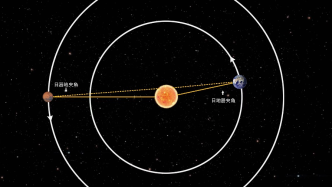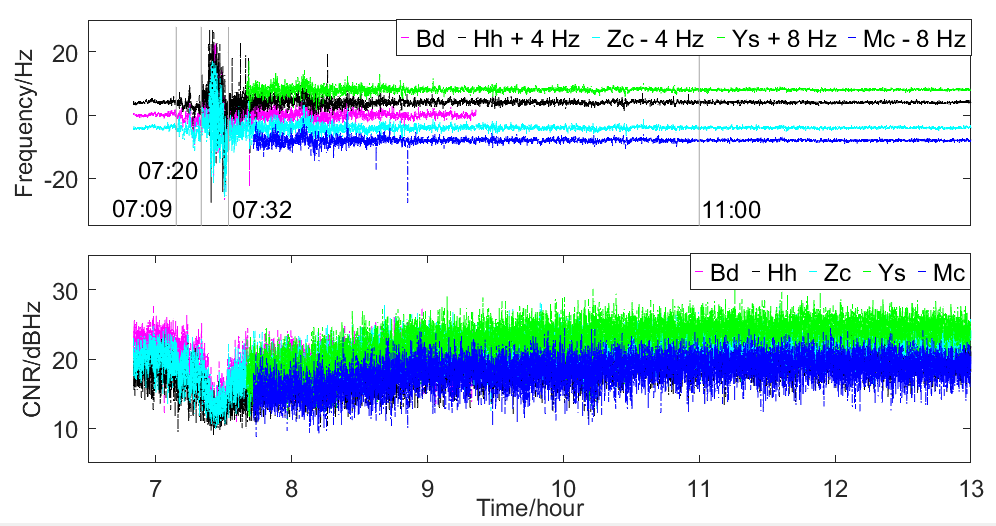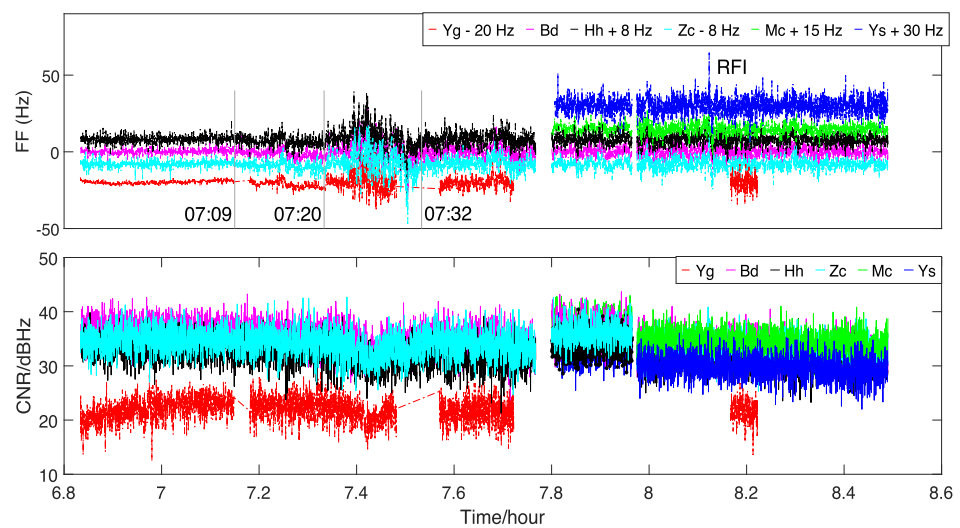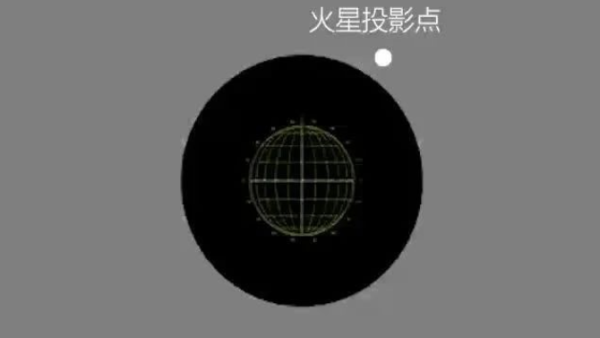
Recently, with the support of the National Space Administration, Chinese and foreign scientists have used my country's "Tianwen-1" orbiter and the European Space Agency's "Mars Express" orbiter to measure and control communication signals during the transit of Mars, and obtained important research results. In December 2022, the achievement will be published in The Astrophysical Journal Letters, an international professional journal in the field of astronomy. The corresponding authors are Ma Maoli from the Shanghai Astronomical Observatory of the Chinese Academy of Sciences and Guifré Molera Calvés from the University of Tasmania in Australia.

Figure 1 The positional relationship between the Earth, Mars and the Sun during the solar transit
The transit of Mars refers to a natural phenomenon in which the Earth and Mars move to both sides of the sun and the three are almost in a straight line (as shown in Figure 1). During the transit of Mars, the radio signal transmitted by the probe to the Earth measurement and control station passes through the space near the sun (hereinafter referred to as the space near the sun), and is interfered by the electromagnetic radiation of the sun, causing the signal strength and frequency to change. Through the study of these effects, scientists can inversely study the activity of the sun. During the Mars solar transit from late September to mid-October 2021, the "Tianwen-1" orbiter and the European Space Agency's "Mars Express" orbiter mission team control the two probes to regularly transmit radio signals to the earth. Scientists from many countries use More than a dozen radio telescopes at home and abroad have observed how the signals of the two detectors are affected by the sun and obtained a large amount of data.

Figure 2 During the transit of Mars, multiple VLBI stations observe "Tianwen-1" and "Mars Express"
On October 9, 2021, when the projection point of Mars (the projection of Mars near the sun, as shown in Figure 2) is 2.6 Rs (radius of the sun) from the heliocenter, the researchers found that six observatories received the "Tianwen-1 The radio signal frequency of the "Mars Express" orbiter and the "Mars Express" orbiter has the strongest disturbance of ±20Hz, which lasts for 10 minutes.
Through the analysis of the disturbance signal, the researchers found that when the radio signal passed through the adjacent space during the propagation of the radio signal, the total electron content in this area occurred thousands of TECU (total electron unit, 1TECU=1016 electrons/square meter) Variety. After comparing with the optical remote sensing observation data obtained by the Large Angle Spectrocoronameter (LASCO) during the same period, it was found that the change in the total electron content this time was caused by the coronal mass ejection (CME) phenomenon. As one of the most violent eruptions on the sun, the CME phenomenon can quickly eject a large amount of plasma carrying a magnetic field. The refraction and scattering effects of these plasmas on the signal will cause disturbances in the frequency of the signal.
Since the same frequency disturbance signal arrives at different stations at different times, the plasma ejection velocity of the CME can be calculated through the propagation distance and propagation time between the frequency disturbance signal and each station, so multi-station joint measurement can be used Study the space propagation of solar activity in peri-solar space.

(a) Frequency disturbance changes of "Tianwen-1"

(b) Mars Express Frequency Disturbance Change Figure 3 On October 9, 2021, when the Mars projection point is 2.6 Rs away from the heliocentric, the "Tianwen-1" (a) and "Mars Express" (b) caused by coronal mass ejection Frequency and carrier-to-noise ratio perturbation changes. Hh: Hartbisthoek Station, South Africa; Ys: Jerves Station, Spain; Mc: Medicina Station, Italy; Sv, Zc and Bd: Svetlaye Station, Zelenchuk, Russia Scaya Station and Bandara Station; Yg: Yarra Station, Australia. The CME arrived at the projection point of Mars at 07:09, the front of the CME arrived at the projection point of Mars at 07:20, left at 07:32, and resumed the background solar wind state after 11:00. Between 07:20 and 07:32, the frequency disturbance reaches ±20Hz. Times are in Coordinated Universal Time (UTC).

This observation also detected the nascent high-speed solar wind flow when the CME left. Nascent solar wind refers to the solar wind just emerging from the sun. It is generally believed that the nascent solar wind is low-speed, and the high-speed solar wind will only form after accelerating within the range of 5Rs~20Rs from the heliocentric. However, in this observation, a high-speed solar wind phenomenon with a speed of thousands of kilometers per second was discovered at a position 2.6Rs away from the heliocentric. The researchers speculate that the nascent high-speed solar wind flow may be formed by the influence of magnetohydrodynamic waves from the sun. This observation work also shows that the multi-station observation method can provide observational data support for researchers to study solar wind flow and magnetic fluid fluctuations.

Left: Transient solar wind speed change and high-speed flow radial speed change caused by CME passing through the projection point of Mars; Right: Coronal flow wave speed change

Fig.6 Projection points of coronal waves arriving at multiple stations, and schematic diagram of high-speed flow propagating along the Hh-Ys direction
This work benefits from the high sensitivity of the detector's radio remote sensing observation method, as well as the advantages of high temporal resolution and high spatial resolution of multi-station joint observation. This method can observe the near-sun space that in-situ detectors cannot enter and the small-scale rapid changes in space that cannot be identified by optical means, which will help researchers study the near-sun space environment and its impact on deep space communication in more detail. .
This work was strongly supported by the Lunar Exploration and Space Engineering Center of the National Space Administration, the Beijing Aerospace Flight Control Center, the Beijing Institute of Tracking and Communication Technology, the Chinese VLBI Observation Network and the European VLBI Observation Network, as well as the National Natural Science Foundation of China, the National Basic Science Supported by the Public Science Data Center "VLBI Lunar and Deep Space Exploration Database" and the National Key Research and Development Program.